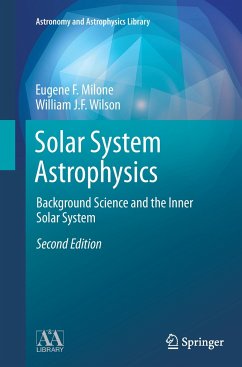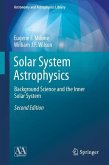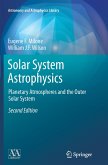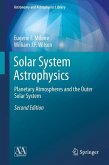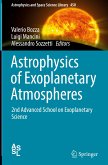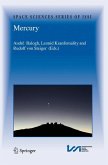The second edition of Solar System Astrophysics: Background Science and the Inner Solar System provides new insights into the burgeoning field of planetary astronomy. As in the first edition, this volume begins with a rigorous treatment of coordinate frames, basic positional astronomy, and the celestial mechanics of two and restricted three body system problems. Perturbations are treated in the same way, with clear step-by-step derivations. Then the Earth's gravitational potential field and the Earth-Moon system are discussed, and the exposition turns to radiation properties with a chapter on the Sun. The exposition of the physical properties of the Moon and the terrestrial planets are greatly expanded, with much new information highlighted on the Moon, Mercury, Venus, and Mars.
All of the material is presented within a framework of historical importance. This book and its sister volume, Solar System Astrophysics: Background Science and the Inner Solar system, are pedagogically well written, providing clearly illustrated explanations, for example, of such topics as the numerical integration of the Adams-Williamson equation, the equations of state in planetary interiors and atmospheres, Maxwell's equations as applied to planetary ionospheres and magnetospheres, and the physics and chemistry of the Habitable Zone in planetary systems.
Together, the volumes form a comprehensive text for any university course that aims to deal with all aspects of solar and extra-solar planetary systems. They will appeal separately to the intellectually curious who would like to know how just how far our knowledge of the solar system has progressed in recent years.
All of the material is presented within a framework of historical importance. This book and its sister volume, Solar System Astrophysics: Background Science and the Inner Solar system, are pedagogically well written, providing clearly illustrated explanations, for example, of such topics as the numerical integration of the Adams-Williamson equation, the equations of state in planetary interiors and atmospheres, Maxwell's equations as applied to planetary ionospheres and magnetospheres, and the physics and chemistry of the Habitable Zone in planetary systems.
Together, the volumes form a comprehensive text for any university course that aims to deal with all aspects of solar and extra-solar planetary systems. They will appeal separately to the intellectually curious who would like to know how just how far our knowledge of the solar system has progressed in recent years.
From the book reviews:
"As a textbook I found it excellent. Although I've taken master's level courses on astronomy at the university there was a lot of interesting content, and what I loved the most, were the 'Challenges' at the end of each chapter - mostly problems where you need to calculate something or derive an equation. ... If you want a detailed account of the inner solar system, I think this is the book to dive into." (Kadri Tinn, AstroMadness.com, January, 2015)
"This second edition ... provides 'new insights' on the topic and contains additional material on the sun, moon, Mercury, Venus, Mars, and other areas. ... The writing is lucid and the discussions are easy to follow. This valuable addition to college libraries will also be welcome on the bookshelf of anyone with an interest in the solar system. Summing Up: Highly recommended. Upper-division undergraduates and above." (A. Spero, Choice, Vol. 52 (1), September, 2014)
"As a textbook I found it excellent. Although I've taken master's level courses on astronomy at the university there was a lot of interesting content, and what I loved the most, were the 'Challenges' at the end of each chapter - mostly problems where you need to calculate something or derive an equation. ... If you want a detailed account of the inner solar system, I think this is the book to dive into." (Kadri Tinn, AstroMadness.com, January, 2015)
"This second edition ... provides 'new insights' on the topic and contains additional material on the sun, moon, Mercury, Venus, Mars, and other areas. ... The writing is lucid and the discussions are easy to follow. This valuable addition to college libraries will also be welcome on the bookshelf of anyone with an interest in the solar system. Summing Up: Highly recommended. Upper-division undergraduates and above." (A. Spero, Choice, Vol. 52 (1), September, 2014)

